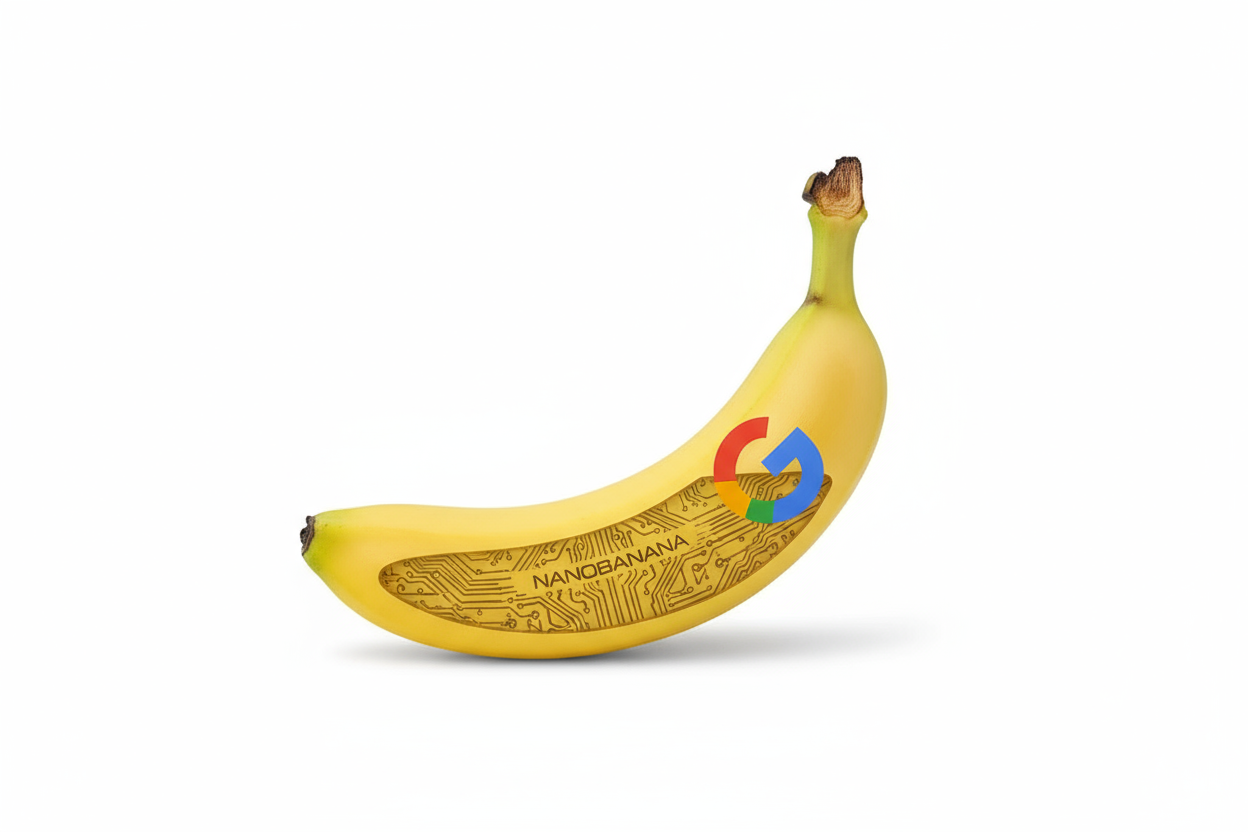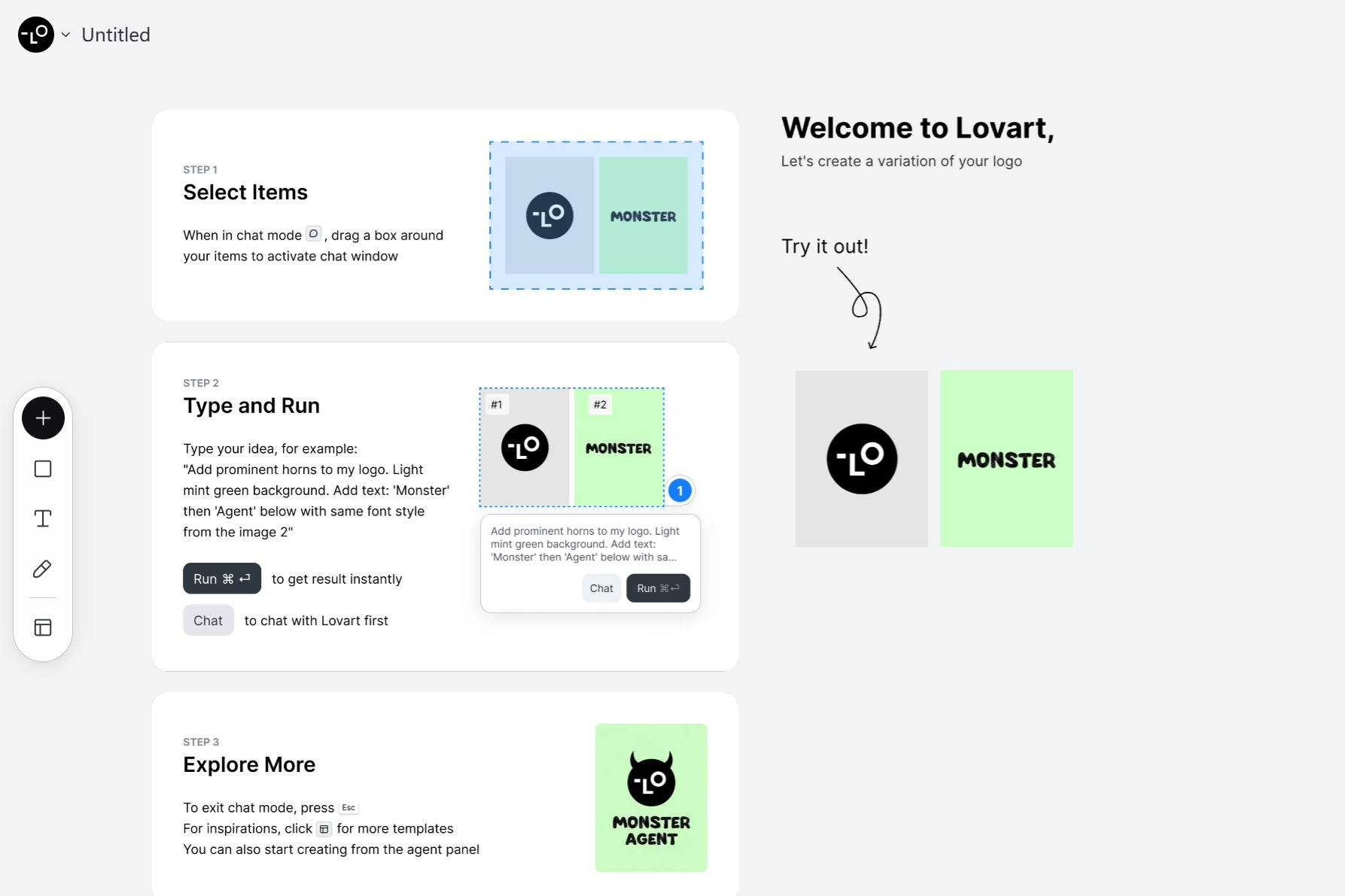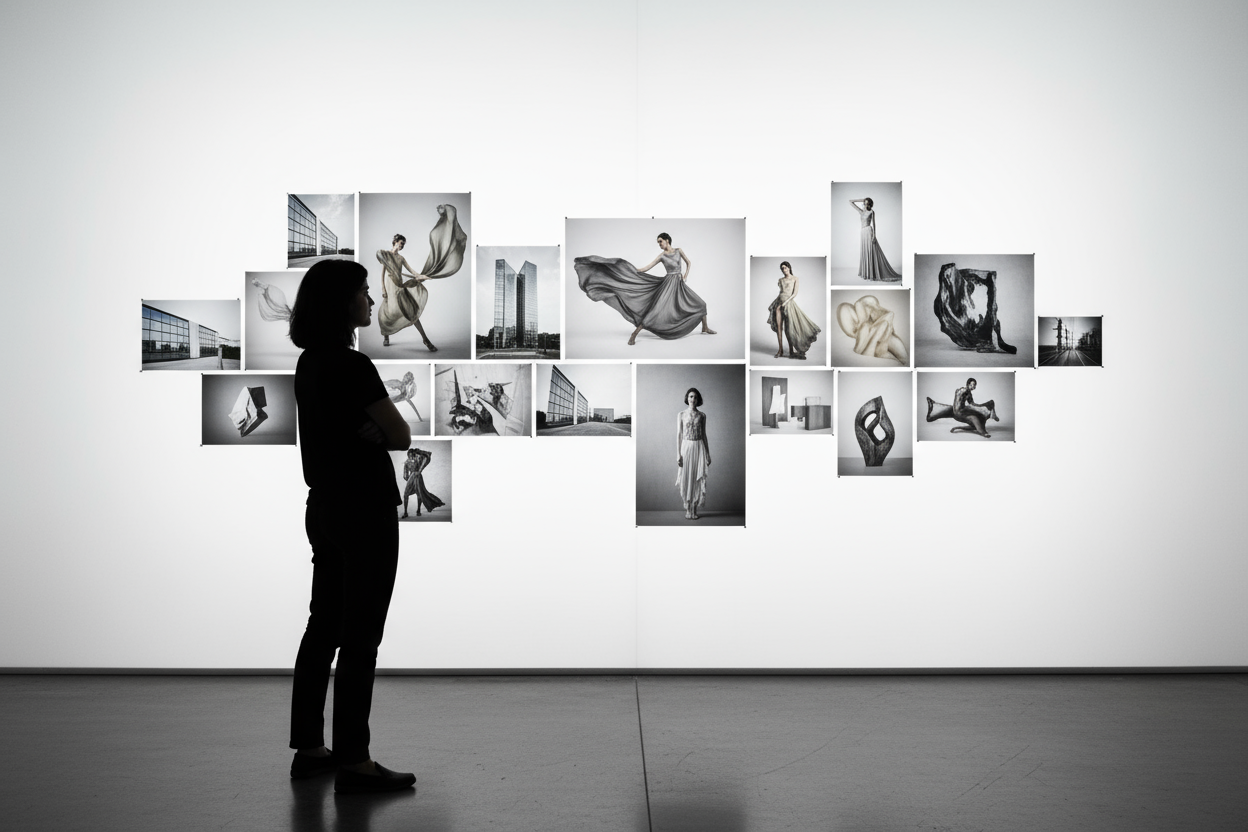How Designers Are Using NanoBanana2 to Create Visual Portfolios That Stand Out

The Portfolio Renaissance: Going Bananas for Better Design
Let’s be real, the life of an indie designer is a constant tightrope walk. You’re the CEO, the marketing department, the tea-maker, and, oh yeah, the creative genius. The hardest part? Getting noticed. Your portfolio isn't just a collection of past jobs; it's your main character energy, your professional swagger, and the one thing standing between you and that dream client.
For years, creating a portfolio that truly sings meant countless hours spent Photoshopping, rendering, and begging friends to pose for mockups. Then came the AI revolution, and suddenly, the impossible became… well, possible.
But the real game-changer isn't just the ability to generate images; it's the power to edit them with surgical precision and scale your output without sacrificing your sanity.
The Key Integration: Lovart and NanoBanana2
Lovart, the leading AI Design Agent platform, understands this demand for scale and quality. By integrating the anticipated capabilities of NanoBanana2 (NB2) directly into its platform, Lovart is positioned to redefine design productivity.
This isn’t just another image model; it’s the design co-pilot you never knew you needed, accessible right inside your established workflow. From what the community is anticipating, NanoBanana2 is set to iron out the last few wrinkles in AI-driven design, transforming the way independent creators conceptualize, prototype, and present their work. For designers using Lovart, this means NB2’s power is seamlessly translated into increased creative output. It’s taking the "work" out of "artwork," letting you focus on the "art." We’re talking about a tool that elevates your portfolio from a meek whisper to a powerful, undeniable roar.
If you’ve ever wished you could instantly transport your logo onto a billboard in Tokyo, or seamlessly combine a 1920s fashion style with a modern product shoot, then buckle up. Your portfolio is about to get a serious upgrade.
NanoBanana: A Designer’s Secret Weapon
Before we peel back the layers on the much-anticipated NanoBanana2, let’s acknowledge why the original NanoBanana model had designers buzzing in the first place.
NanoBanana’s foundational magic was built on speed, consistency, and an uncanny ability to understand natural language prompts. For the indie designer who is constantly time-crunched, these features weren't a luxury—they were essential for survival.
Here’s the TL;DR on why the first iteration was a game-changer for independent portfolio building:
- Fast Rendering Speed: Time is money, especially when you’re doing ten jobs at once. Near-instant visual concepts mean you can iterate on client ideas during a meeting.
- Strong Consistency: Maintaining a specific character, style, or texture across a series of images was easier than ever, which is crucial for showing cohesive branding work.
- Impressive “Edit-in-Place” Control: This was the killer feature. Instead of re-rendering an entire image because a client wanted the shirt color changed, you could simply tell the AI, “Make the shirt cerulean blue,” and it would handle the rest, preserving the original style and composition.
This core capability of edit-in-place control is vital for showcasing process in a portfolio—the ability to show a concept and then quickly present high-fidelity revisions based on hypothetical feedback.
To put this into perspective, here is how NanoBanana’s foundational strengths compare to the traditional workflow, especially for creating portfolio mockups.
| Portfolio Element | Traditional Workflow | NanoBanana (NB1) Workflow | Impact for Indie Designer (Especially on Lovart) |
|---|---|---|---|
| Product Mockups | Manual 3D rendering, photography setup, post-processing. | Text-to-Image Generation: "Generate a luxury skincare bottle with iridescent packaging on a marble counter in soft morning light." | Instant Visualization: Saves 4-8 hours per mockup, allowing for a broader range of visual case studies and massive output volume via the Lovart platform. |
| Client Revisions | Masking, selection tools, manual recoloring, ensuring lighting consistency. | Edit-in-Place: "Change the background from marble to polished wood" (maintains product and lighting). | Rapid Iteration: Lovart's centralized editing tools, powered by NB1, enabled designers to showcase flexibility and fast turnaround times. |
| Brand Consistency | Manually ensuring color codes, light sources, and graphic placement across multiple scene mockups. | Strong Style Consistency: Maintains the brand "vibe" across various generated scenarios (e.g., logo on a mug, a T-shirt, and a website). | Cohesive Narrative: Creates professional, unified case studies that look like they were shot by a major studio. |
The Banana Split: What NanoBanana2 Unlocks for Portfolios
The original model was great, but the buzz around NanoBanana2 is all about the four major anticipated improvements that directly address the high-stakes world of professional design—and these improvements are exactly what will make your portfolio stand out to discerning clients.
These anticipated features, based on community speculation and general trends in generative AI, aren't minor tweaks; they are paradigm shifts for visual quality and control.
Texture Fidelity and Detail: The Uncanny Realism
The community noticed that while NB1 produced cohesive images, fine textures—like the weave of a fabric, the subtle grain of leather, or the pores on skin in a portrait—could sometimes look a bit "soft" or stylized.
The NB2 Promise: Enhanced micro-detail sharpness, edge clarity, and material realism.
Portfolio Payoff (How Lovart Designers Boost Productivity):
- Product Design Mockups: Your hypothetical product packaging won't just look like cardboard; it will look like recycled, slightly textured, matte-finish cardboard. Clients need to see the material quality, and NB2 will deliver realism that blurs the line between AI-generated and high-end studio photography. For Lovart designers, generating studio-quality renders in seconds—instead of hours—is the ultimate productivity hack.
- Fashion and Textile Work: Generating lookbooks or visual concepts where the drape, luster, and weave of the fabric are crucial suddenly becomes reliable.
This level of texture fidelity means your portfolio can sell not just the design, but the materiality of the design, a critical aspect of high-value client work.
Cross-Project Consistency: Building a Visual Universe
Consistency is the bedrock of strong branding. When presenting a case study that involves a logo, website layout, social media assets, and maybe a physical product, everything must feel like it belongs to the same visual universe.
The NB2 Promise: Improvement in maintaining character identity, style, and proportions across multi-image sets and narrative sequences.
Portfolio Payoff (Lovart’s Narrative Efficiency):
This solves the classic AI challenge where slight prompt variations lead to tiny, yet noticeable, shifts in style. For an indie designer using Lovart's batch generation tools, this means you can generate a series of images for a single client project—a full visual narrative—and know that the mood, lighting, and core aesthetic will hold true across the board. This ensures the 40+ image outputs generated on the Lovart canvas maintain perfect brand alignment.
Scenarios Demanding High Consistency (NB2's Playground):
- E-commerce Product Variants: Creating a seamless grid of 20 product images (e.g., a chair in 20 different colors/fabrics) with identical lighting, shadows, and camera angles.
Surgical Precision in Local Editing: The Master Surgeon
NB1’s edit-in-place was revolutionary, but sometimes when you asked it to change a watch on a wrist, it decided to slightly re-light the whole arm, too. Oops.
The NB2 Promise: More stable mask-aware local editing, reducing unintended changes to non-target regions.
Portfolio Payoff (Maximum Quality Control on Lovart):
This is pure time efficiency and quality control. Indie designers thrive on quick, professional adjustments. When a prospective client asks, "Could you show me this product with a gold foil logo instead of silver?" you want the change to be instant and flawless. NB2’s enhanced precision, accessible via Lovart’s unified editing canvas, means you can conduct surgical, text-driven edits (like swapping out a color, changing a single object, or restoring a specific area) with the confidence that the rest of your beautiful composition is untouched.
It’s the difference between using a fine-tipped pen and a broad-tipped marker. For high-end, detailed portfolio pieces, that precision is everything.
Deeper Prompt Understanding: Designing with Nuance
While all AI models understand "a dog wearing a hat," only the best can truly grasp abstract concepts and stylistic nuances.
The NB2 Promise: Deeper contextual understanding to better interpret tone, emotional cues, and multi-step stylistic instructions.
Portfolio Payoff:
This elevates the designer from simply describing an image to directing a feeling. You can use sophisticated language that speaks to brand identity. The combination of Lovart's deep thinking design agent and NB2's nuanced understanding translates high-level creative briefs into stunning visuals with fewer iterations.
- "Generate a logo reveal that evokes nostalgia and trustworthiness in the style of mid-century modern corporate identity."
NB2’s improved language processing means fewer iterations and a faster path to visuals that connect emotionally—a key differentiator in a crowded design market.
Creating the "Impossible" Portfolio Piece
The real magic happens when you stop seeing NanoBanana2 as just a generator and start viewing it as a boundless visualization studio. For indie designers, this means you can build a portfolio full of "What If" projects—work that showcases your potential, not just your past clientele.
This is where the general capabilities of cutting-edge AI image generation (as seen in tools powered by models like NanoBanana) become a professional superpower.
The "What If" Project: Prototyping Visionary Work
You haven't landed a massive corporate client yet? No problem. Use NB2 to generate high-fidelity mockups for a major brand you wish to work with.
- Scenario: You’re a UI/UX designer. You can generate a futuristic concept for a smart home interface, transporting the interface design onto a specific piece of hardware (say, a holographic glass screen) in a high-end architectural scene.
Seamless Blending and Remixing: The Collage Genius
The ability to upload and combine multiple photos is a massive shortcut for mood boards and design conceptualization.
| Technique | Description | Portfolio Application |
|---|---|---|
| Asset Combination | Upload a logo file (Image A) and a background texture (Image B) and ask NB2 to combine them seamlessly. | Instant Branding: Effortlessly applying a brand asset to hundreds of generated visual assets for a single case study. |
| Style Remixing | Upload a photo of a painting (Image A) and a photo of a coffee shop (Image B), and ask the AI to "transfer the style, color, and texture of Image A onto Image B." | Conceptual Design: Showcasing how a brand’s visual identity (e.g., inspired by Art Deco or 90s Grunge) can be applied to an environment or product line. |
Typography and Branding: Text That Finally Works
Early AI models struggled with rendering accurate, readable text. Modern updates, like those seen in the NanoBanana family, are prioritizing typography accuracy.
Portfolio Payoff:
Designers can now confidently generate mockups of posters, packaging, or billboards that feature the actual client typography, perfectly rendered in context, and without manual cleanup. This allows a graphic designer to instantly visualize their font choice in a real-world setting, significantly strengthening their portfolio submission.
Fictional Case Study Vignettes: NB2 in Action
- The E-commerce Designer (Mockup King): Instead of one hero shot for a conceptual product, they generate fifty variations—different lighting, different backgrounds (beach, forest, studio), and different colorways—all from one base prompt and a few local edits. Their portfolio shifts from "Here's what I did" to "Here's the visual universe I can create, instantly."
- The Concept Artist (Narrative Weaver): Working on a graphic novel concept, the artist uses NB2's improved consistency to lock in the main character’s look. They generate 20 sequential panels showing the character in different actions and emotional states, knowing that the fine details (like the strap on a backpack or a tattoo design) remain perfectly consistent throughout the visual story. This is storytelling at the speed of thought.
The Indie Workflow: Speed, Scale, and Substance
For the independent designer, the most valuable currency is time. NanoBanana2 doesn't just make better images; it redesigns your entire workflow to be faster and more scalable. By taking on the heavy lifting of rendering and detailed retouching, NB2, particularly when used within the Lovart platform, turns the indie designer into a creative director and curator.
Scale and Experimentation
The biggest hurdle for indie designers is fear of failure and the cost of experimentation. NB2 drastically lowers both.
- Rapid Prototyping: Have a wild idea for a new font or color palette? Test it instantly across ten different generated scenes.
- Massive Mockup Library: Create a highly specialized portfolio for a niche (e.g., luxury watch packaging, retro gaming posters) without ever needing a physical product or a photo shoot. This allows an indie designer to credibly market themselves to high-end clients based purely on their generated visionary concepts.
Conclusion: Beyond the Banana Peel
The arrival of a tool like NanoBanana2, especially its seamless integration into platforms like Lovart, signals a pivotal moment for the indie design community. It’s a democratization of the highest tiers of visual production, offering a massive advantage to the agile, creative, and prompt-savvy solo artist.
NB2’s anticipated focus on realism, consistency, and surgical precision directly addresses the pain points of building a professional, high-impact portfolio. It allows the designer to:
- Dream Bigger: Visualize "impossible" projects to attract top-tier clients.
- Work Faster: Iterate and revise with text-driven precision, saving hundreds of hours.
- Tell Cohesive Stories: Ensure every piece of a case study lives in the same, beautifully consistent visual universe.

The competition for attention is fierce, but your portfolio no longer has to be limited by your budget or your past client list. With NanoBanana2 powered by Lovart, the indie designer is no longer simply showing what they’ve done; they are telling a powerful, cinematic story of what they are capable of doing.
Go forth, design director, and let your portfolio go bananas!

Condividi Articolo